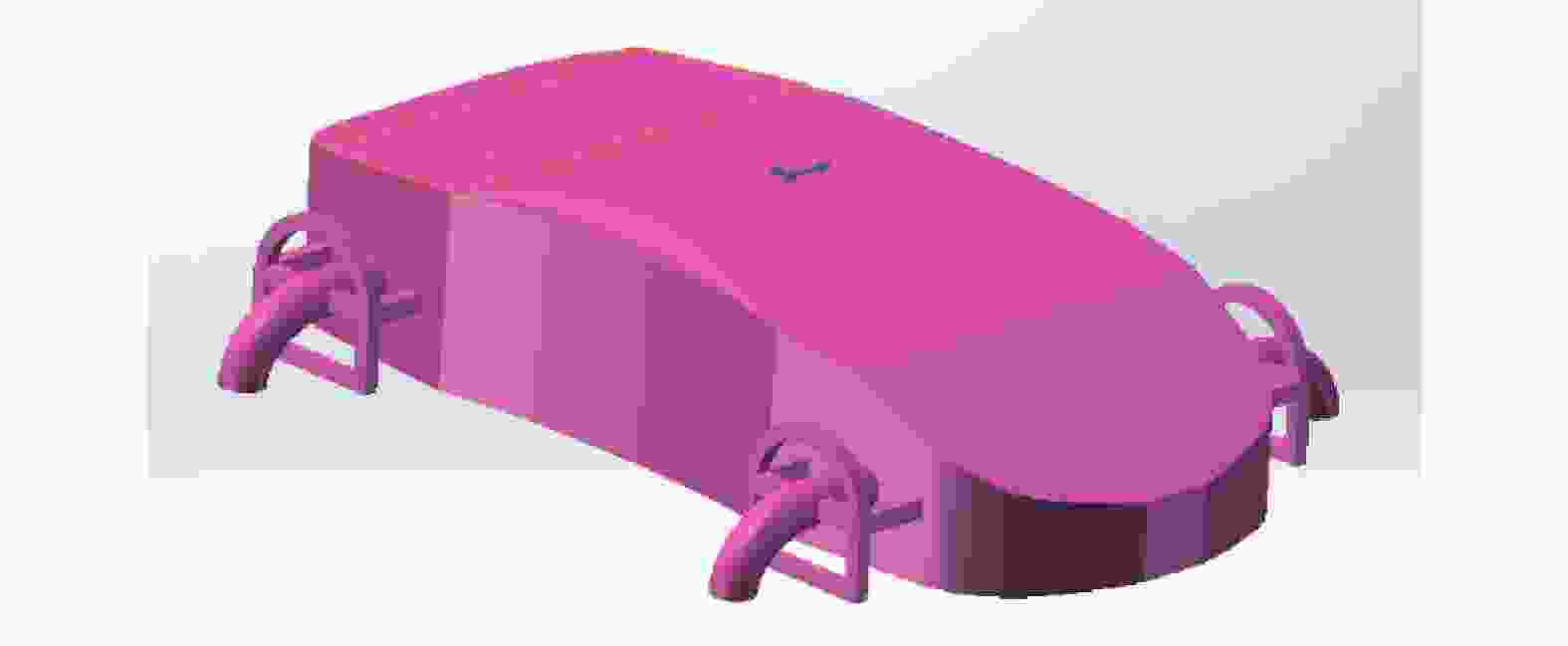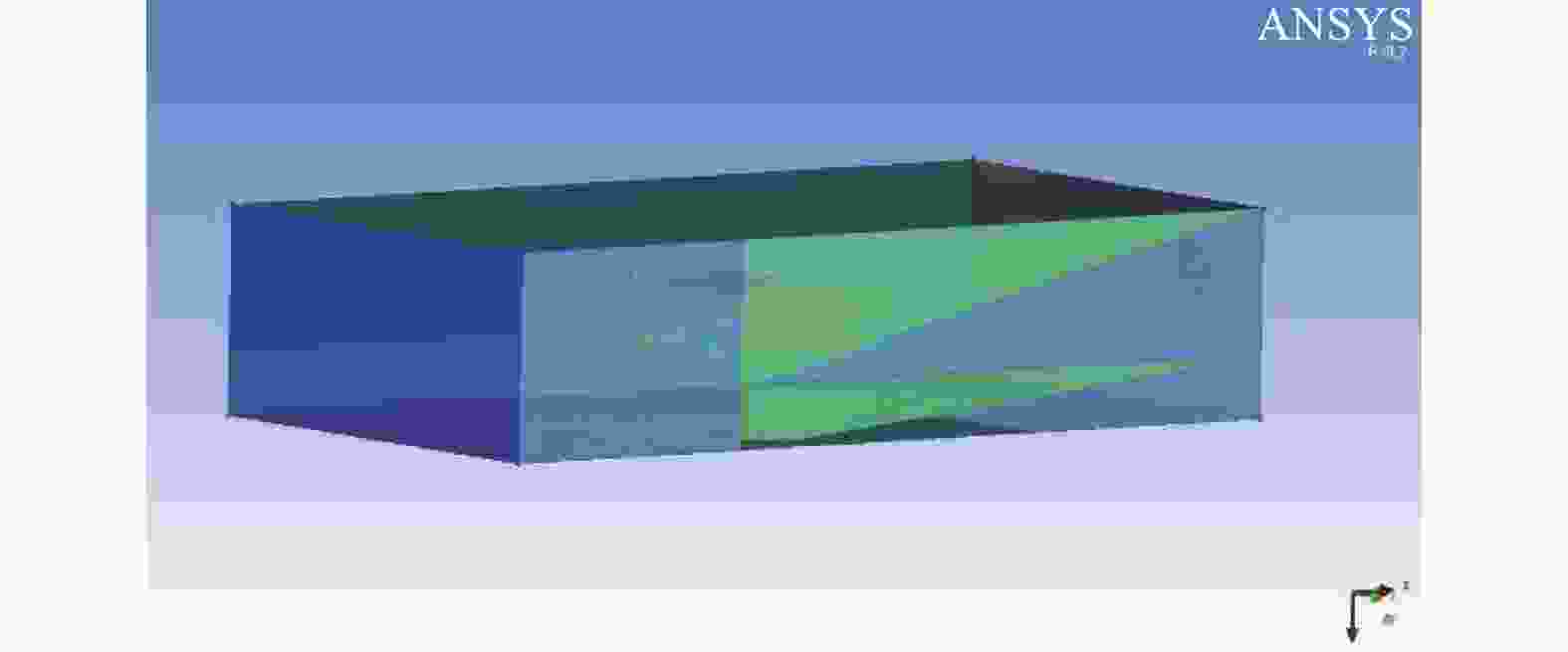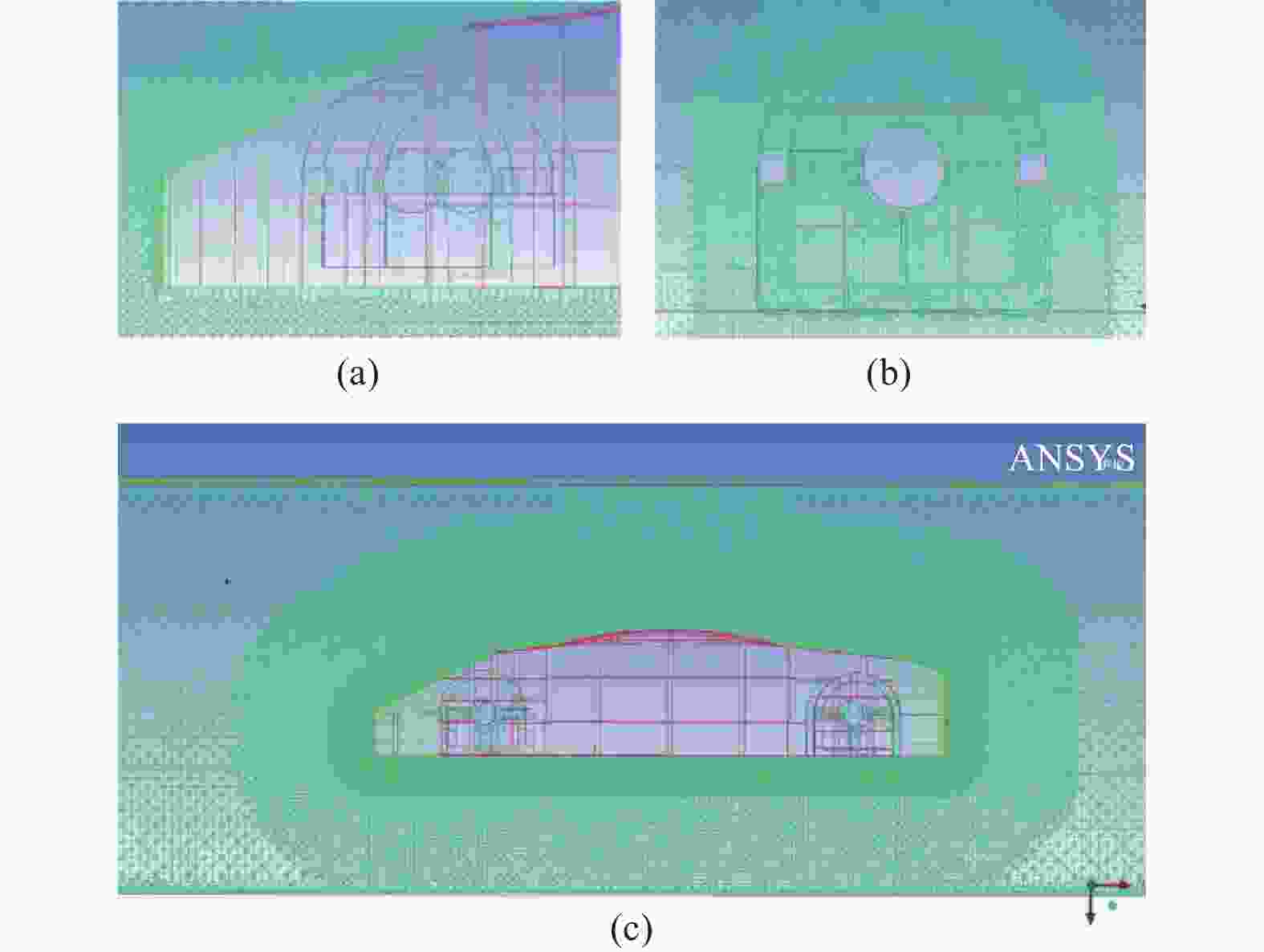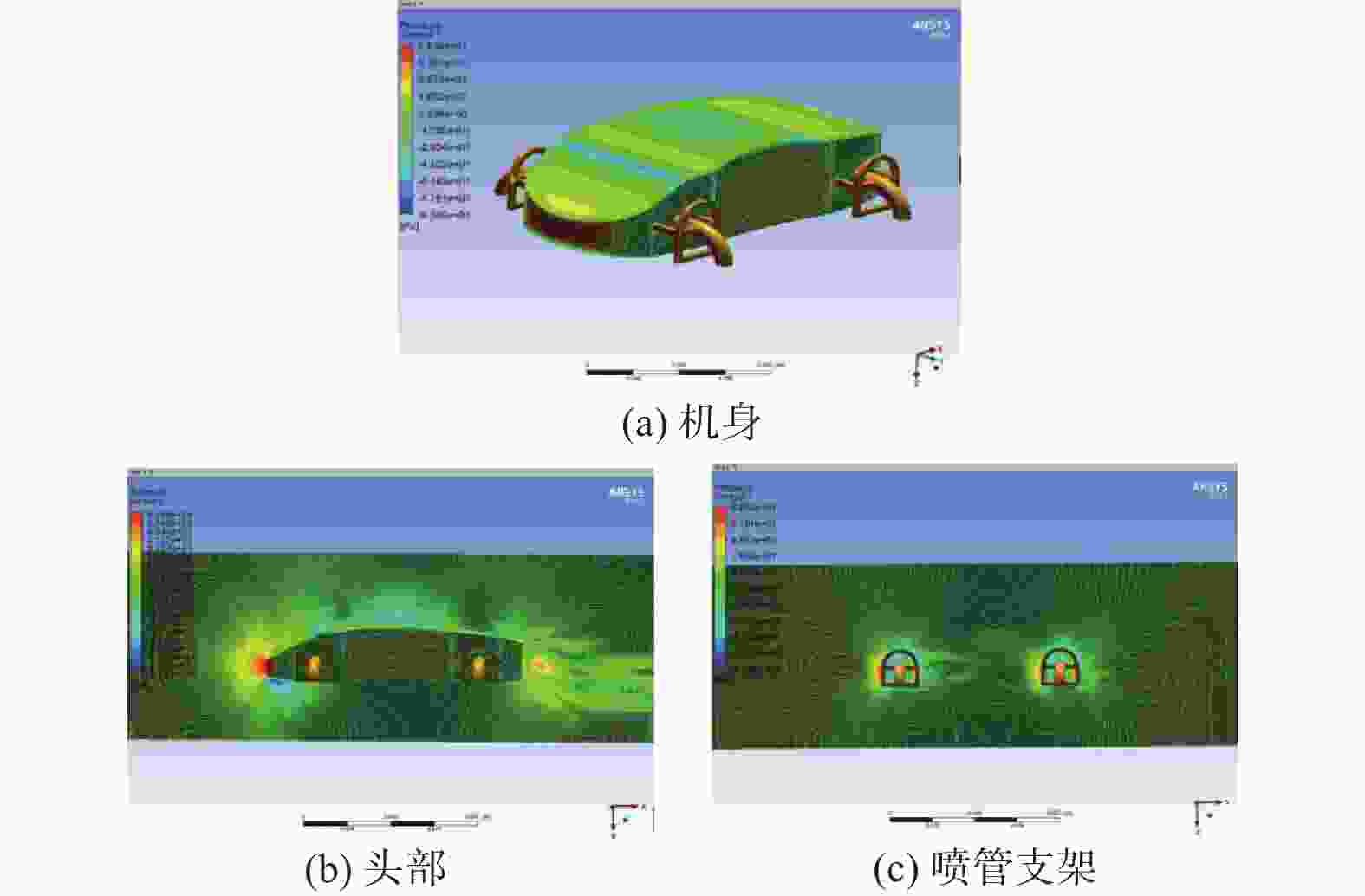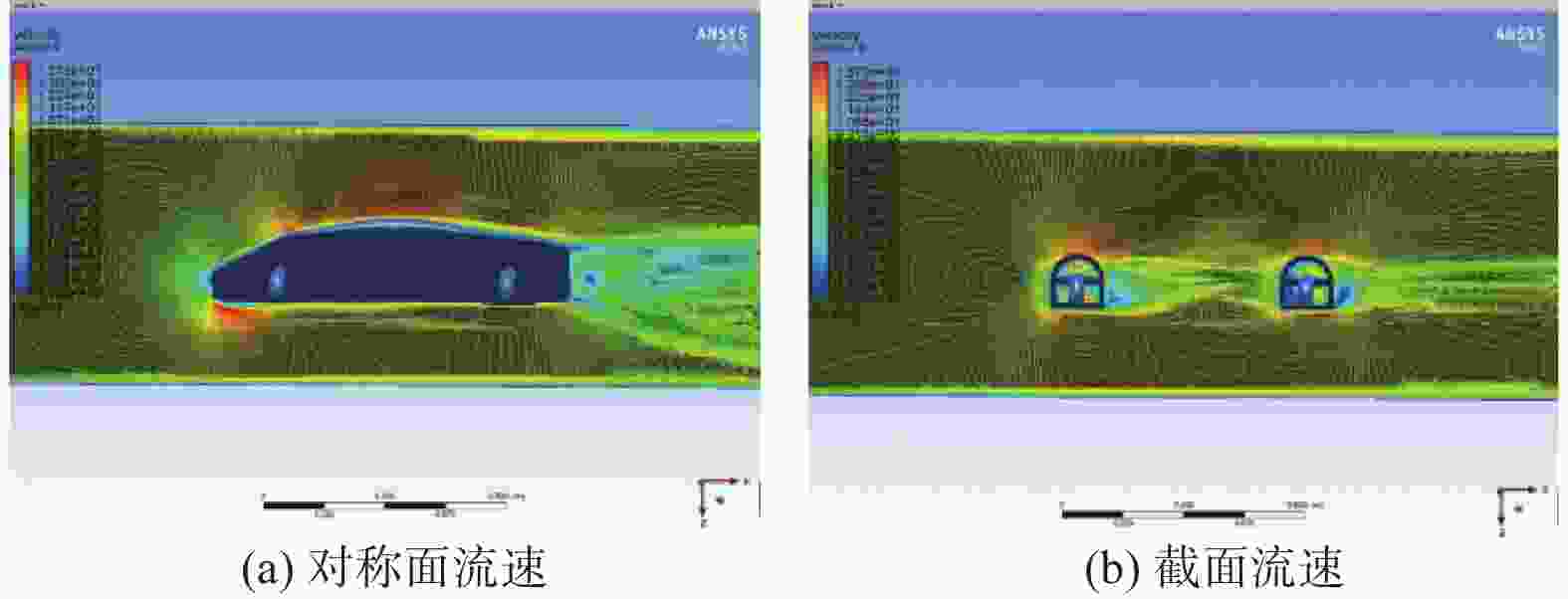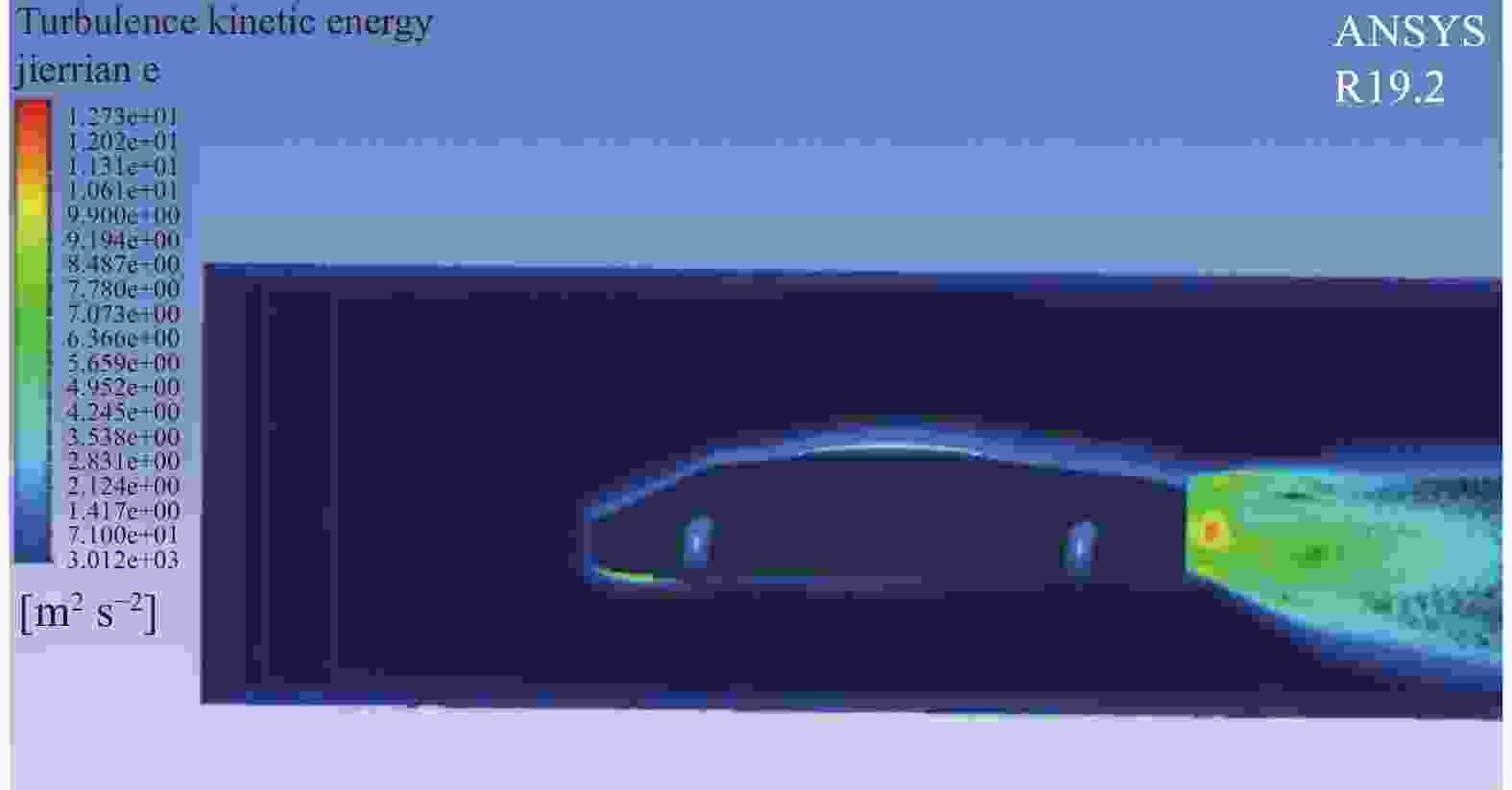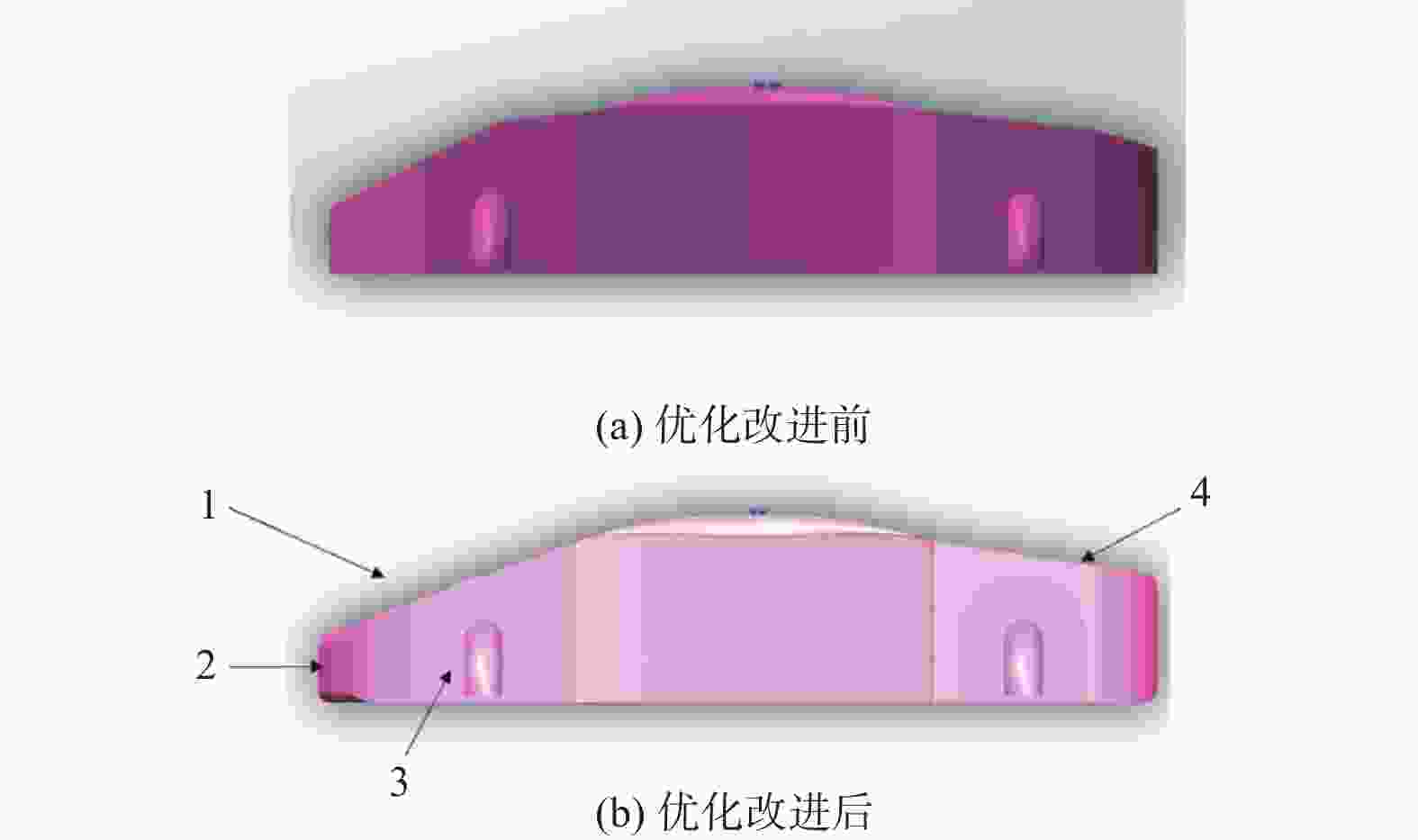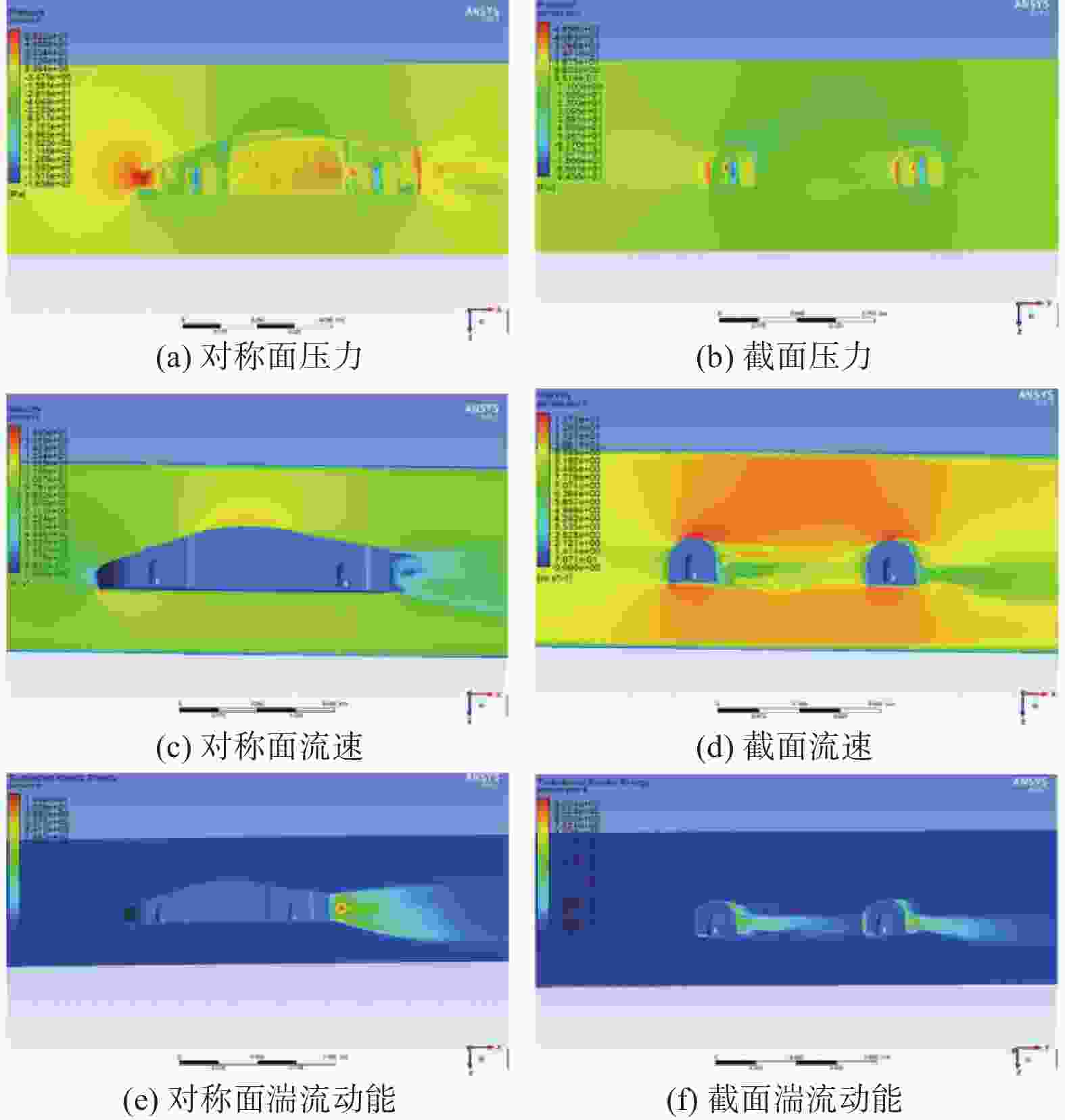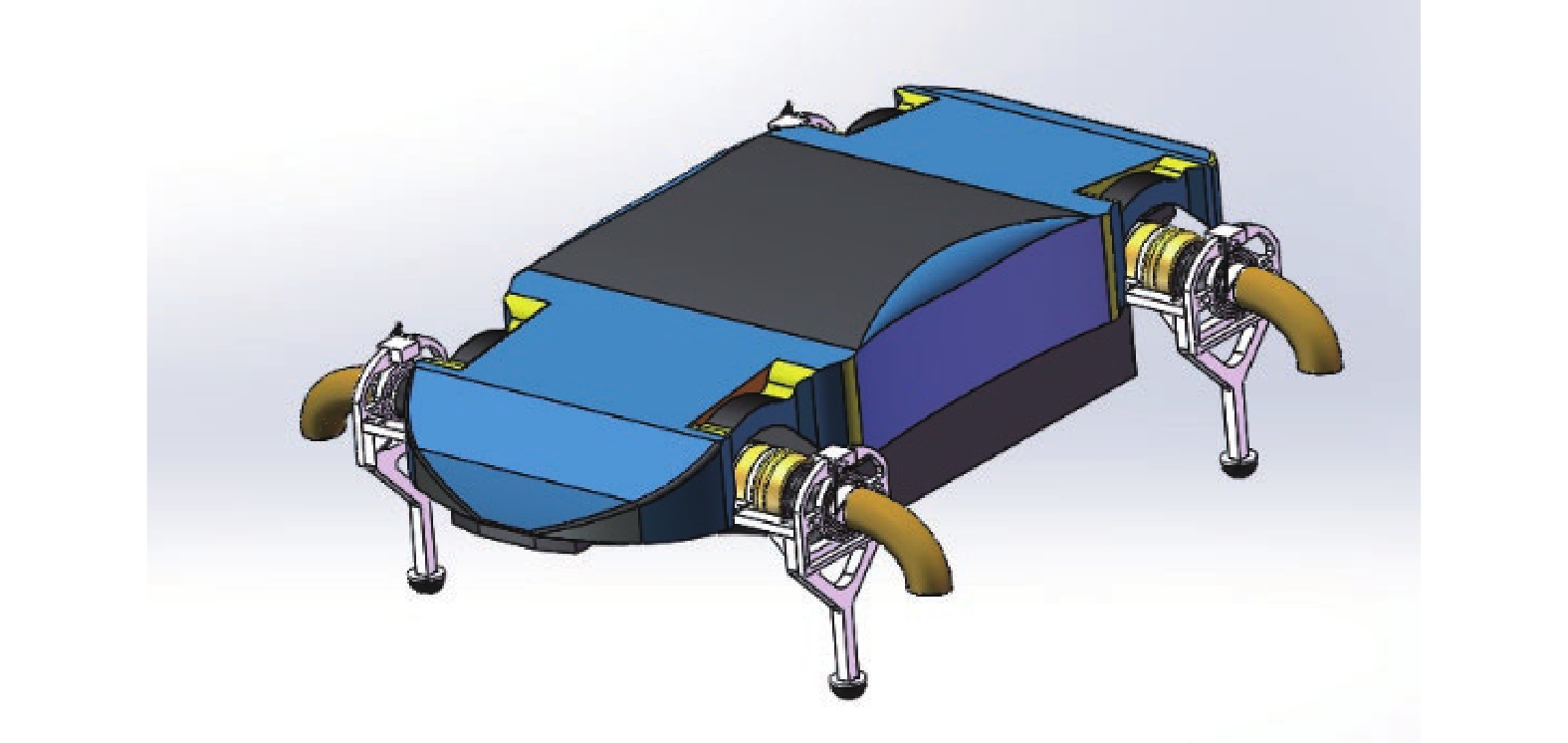Aerodynamic numerical simulation of four-axis vertical take-off and landing jet unmanned aerial vehicle
-
摘要: 基于无人垂直起降飞行器对高机动性、高负载、高动态响应的严苛要求,设计一款四轴垂直起降喷气式无人机. 根据流体力学三大基本方程以及湍流
$ k-\varepsilon $ 方程对气动数值仿真模拟,确定无人机飞行时外部流场计算域. 利用ICEM CFD软件对外部流场进行混合式非结构化网格划分,在Fluent求解器中设置流场边界条件,以湍流模型为基本模型,对无人机整机进行气动性能进行模拟并求解,得到无人机各部分表面的阻力系数、流速分布图、压力分布图和湍流动能图. 对其进行气动特性分析,得出无人机上表面顶部、尾部、下表面头部以及喷气支架处存在动能损耗较大、阻力系数较高的问题. 根据仿真结果,对无人机上述部位进行气动造型优化,结果表明,无人机总阻力系数由原来的0.165减小至0.121,有效改善了无人机表面压力、气流流速和湍流度. 优化后气动特性更加优良,气动造型符合设计理念.Abstract: Based on the strict requirements of high maneuverability, high load and high dynamic response of unmanned vertical take-off and landing (VTOL) aircraft, a four-axis VTOL jet unmanned aerial vehicle (UAV) was researched and designed. According to the three basic equations of fluid mechanics and turbulence k−ε equation, the aerodynamic numerical simulation was carried out to determine the calculation domain of the external flow field during UAV flight. ICEM CFD software was used to divide the external flow field into hybrid unstructured grids. The flow field boundary conditions were set in the Fluent solver, and the turbulence model was taken as the basic model. The aerodynamic performance of the whole UAV were simulated and solved. The resistance coefficient, flow velocity distribution, pressure distribution and turbulent kinetic energy of each part of the UAV surface were obtained, and the aerodynamic characteristics were analyzed. The analysis shows that there are problems of large kinetic energy loss and high resistance coefficient at the top, tail, lower surface head and jet bracket of the upper surface of the UAV. According to the simulation results, the aerodynamic modeling of the above parts of the UAV was optimized. The results show that the total resistance coefficient of the UAV is reduced from the original 0.165 to 0.121, and the surface pressure, flow velocity and turbulence of the UAV are effectively improved. After optimization, the aerodynamic characteristics are better and the aerodynamic modeling is in line with the design concept. -
表 1 飞行器整机参数
Table 1. Parameters of the aircraft
名称 参数 名称 参数 整机长度/m 1.32 整机质量/kg 20 整机宽度/m 0.73 前进飞行速度/(m∙s−1) 10 整机高度/m 0.32 单个发动机推力/kg 21 导流管旋转角度/(°) 60 有效载物质量/kg 60 最高飞行时间/min 30 上升飞行速度/(m∙s−1) 2 表 2 无人机优化前后各表面阻力系数对比
Table 2. Comparison of surface resistance coefficients before and after UAV optimization
仿真设计 头部 机身 尾部 喷管支架 总计 优化前 0.037 0.015 0.04 0.073 0.165 优化后 0.018 0.012 0.031 0.06 0.121 优化比/% 51.35 20 22.5 17.81 26.67 -
[1] 于丽娜. 基于动态决策的灾后救灾物资分配问题研究[D]. 北京: 清华大学, 2018. [2] 刘战合, 乔良直, 罗明强, 等. 一种连翼式双机身无人机气动特性[J] . 空军工程大学学报(自然科学版),2021,22(1):28 − 32. [3] 岳奎志, 张原, 程亮亮, 等. 基于CFD理论的双飞翼无人机气动特性数值模拟[J] . 系统仿真学报,2021(7):1654 − 1660. doi: 10.16182/j.issn1004731x.joss.20-0205 [4] 王军杰, 俞志明, 陈仁良, 等. 倾转四旋翼飞行器垂直飞行状态气动特性[J] . 航空动力学报,2021,36(2):249 − 263. doi: 10.13224/j.cnki.jasp.2021.02.004 [5] 刘勇求, 金忠庆. 飞行器运动控制建模及红外辐射图像仿真[J] . 红外技术,2020,42(9):863 − 872. [6] BOELENS O J. CFD analysis of the flow around the X-31 aircraft at high angle of attack[J] . Aerospace Science and Technology,2012,20(1):38 − 51. doi: 10.1016/j.ast.2012.03.003 [7] 吴志林, 陶家宾. 基于FLUENT的微型修正弹药气动特性仿真[J] . 计算机仿真,2013,30(6):20 − 23,147. doi: 10.3969/j.issn.1006-9348.2013.06.005 [8] 王博. 汽车车身造型与风阻特性优化研究[D]. 西安: 西安理工大学, 2020. [9] 伍星, 卢永刚, 宋琼, 等. 基于 Fluent 的弹体气动特性计算与分析[J] . 兵器装备工程学报,2016,37(2):22 − 25. doi: 10.11809/scbgxb2016.02.006 [10] 鲍晨莹, 于浛, 田超, 等. 基于Fluent的高超声速飞行器多工况仿真[J] . 中国体视学与图像分析,2019,25(3):181 − 190. [11] 闫永蚕, 汤洲, 高楠, 等. 基于空气动力学的高速列车造型设计研究进展[J] . 机械设计,2017,34(6):105 − 112. [12] 李伟平, 肖娟, 张宝珍, 等. 造型设计阶段汽车气动特性优化[J] . 机械科学与技术,2016,35(8):1247 − 1252. doi: 10.13433/j.cnki.1003-8728.2016.0816 -






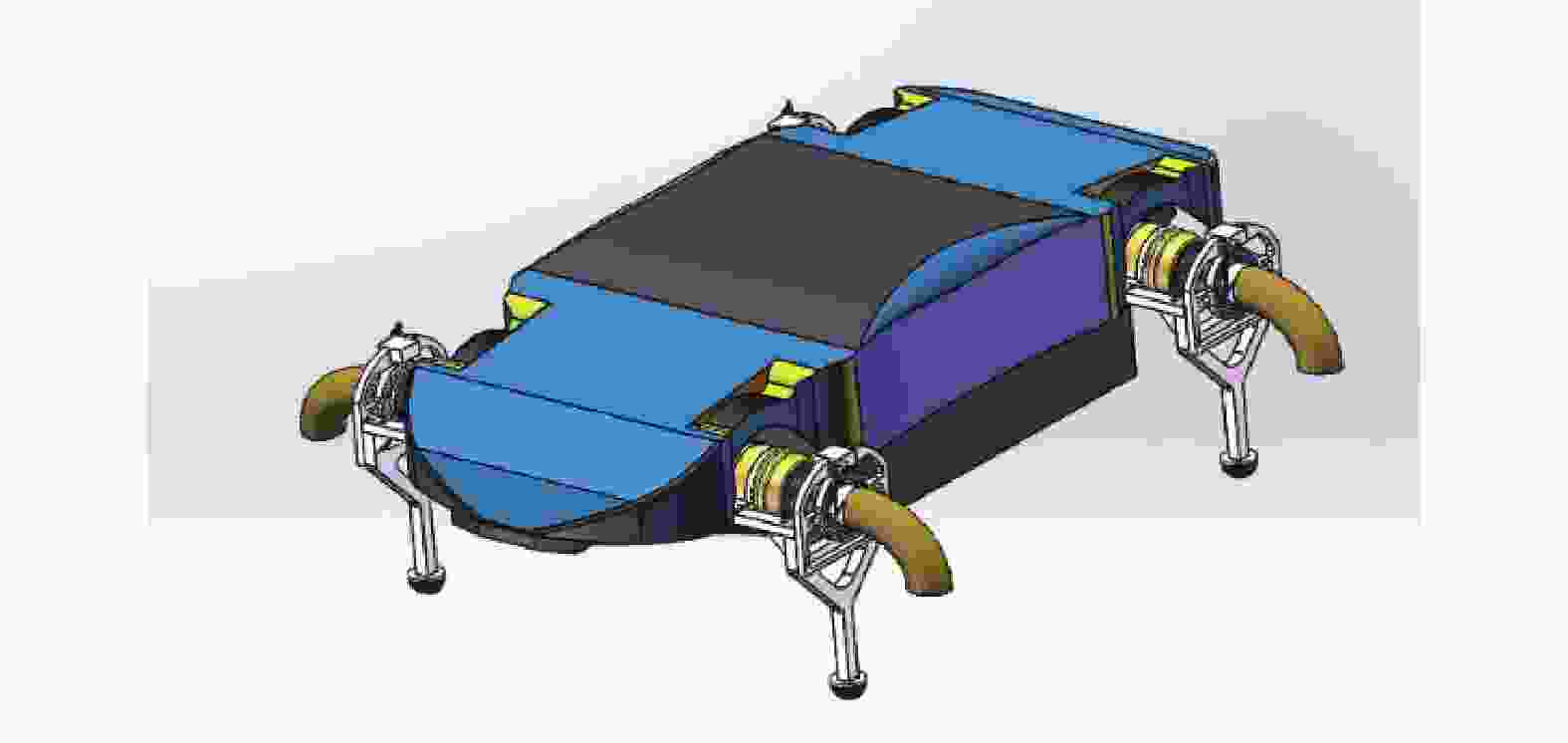
 下载:
下载:
